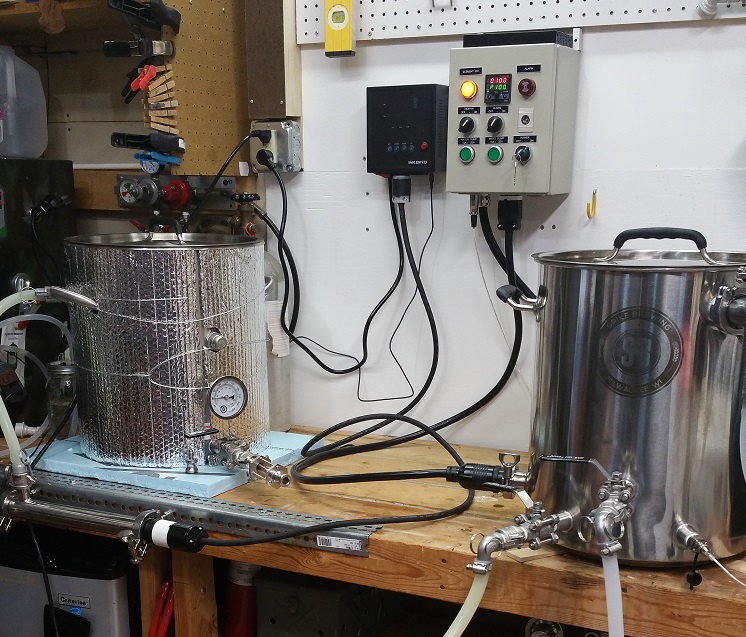RPh_Guy
Bringing Sour Back
I'm thinking about recirculating my mash (in a round cooler), with no sparge.
It seems to me that a RIMS in this situation is easier to setup and more efficient than a HERMS
It looks like the main downside to RIMS is that the heater can potentially scorch the wort. Is this much of a concern?
Anyone have recommendations for a decent RIMS tube? I'd be up for assembling my own if I don't need to weld. I'm pretty sure I have 120V outlets in my brewing area.
The Blichmann looks cool but I'd rather spend a little less if possible.
https://www.morebeer.com/products/blichmann-rims-rocket-120v.html
I'm open to any ideas.
Thanks guys
It seems to me that a RIMS in this situation is easier to setup and more efficient than a HERMS
It looks like the main downside to RIMS is that the heater can potentially scorch the wort. Is this much of a concern?
Anyone have recommendations for a decent RIMS tube? I'd be up for assembling my own if I don't need to weld. I'm pretty sure I have 120V outlets in my brewing area.
The Blichmann looks cool but I'd rather spend a little less if possible.
https://www.morebeer.com/products/blichmann-rims-rocket-120v.html
I'm open to any ideas.
Thanks guys
Last edited:















































![Craft A Brew - Safale S-04 Dry Yeast - Fermentis - English Ale Dry Yeast - For English and American Ales and Hard Apple Ciders - Ingredients for Home Brewing - Beer Making Supplies - [1 Pack]](https://m.media-amazon.com/images/I/41fVGNh6JfL._SL500_.jpg)









